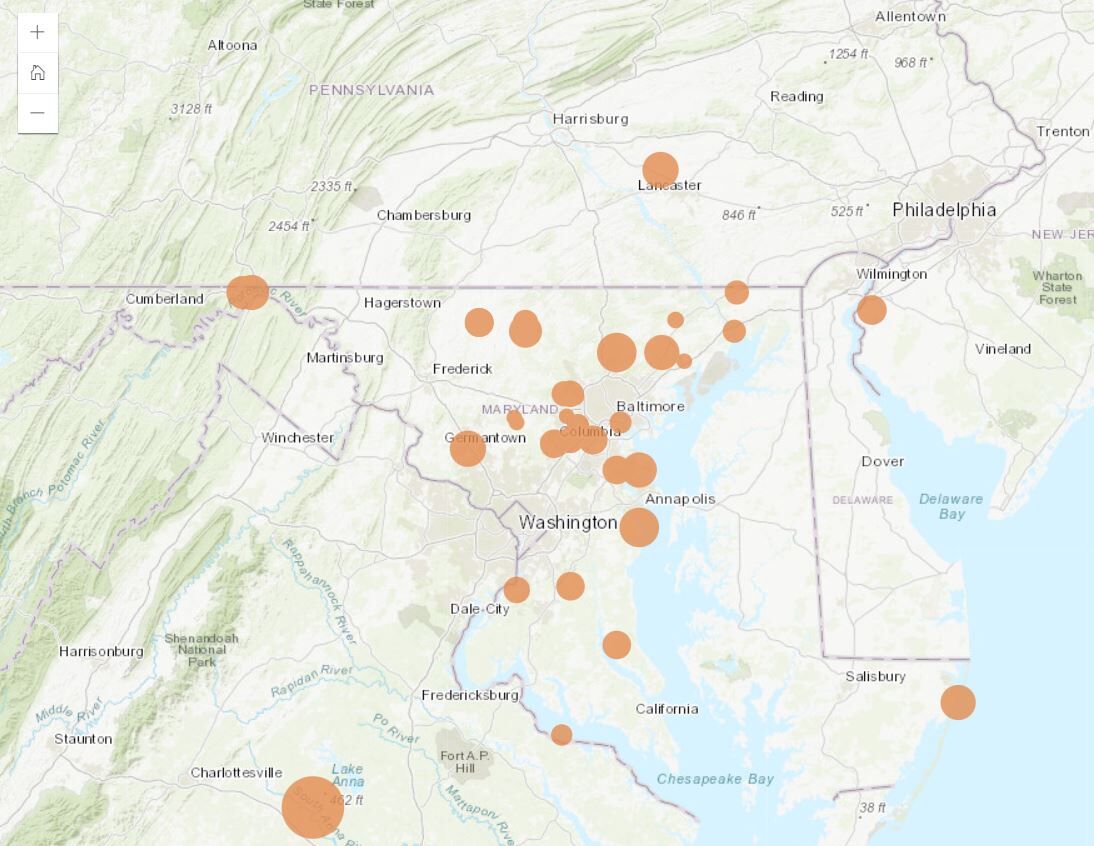When most people think of earthquakes, the West Coast immediately comes to mind as the epicenter of activity — but Tuesday’s earthquake in Maryland is a friendly reminder that even the mid-Atlantic is susceptible to the occasional rumble.
Sykesville, Maryland, was the epicenter of Tuesday night’s earthquake. It measured 2.0 on the Richter scale. Believe it or not, just one day prior, there was another very minor quake near Richmond, Virginia. So, they are not as uncommon as one might think!
There are actually several fault lines in Maryland that are capable of triggering earthquakes. Simply put, faults are fractures beneath the ground. When rock on one side of a fault moves, it produces a shake that triggers an earthquake.
According to the Maryland Department of Natural Resources, Maryland’s faults produce a moderate amount of very weak seismic activity. So that is why, on occasion, residents of the area feel brief shaking (that rarely results in structural damage).
The mid-Atlantic coast is susceptible to earthquake activity from faults that developed when the Atlantic Ocean opened and expanded about 220 million years ago.

Historical data since 1758 shows earthquake epicenters in Maryland — the point on the Earth’s surface directly above where an earthquake originates — are mostly focused between Baltimore and Germantown. Only a small handful of earthquake epicenters have been reported south of Annapolis and west of Frederick.
It’s almost impossible to predict where and when an earthquake will strike, but state history shows 70 temblors have hit the state since 1758. The first reported earthquake with an epicenter south of Annapolis on April 25, 1758, produced a shock that lasted 30 seconds with “weird noises” reported.
Since the 2000s, a dozen earthquakes have struck, including the infamous magnitude 5.8 earthquake centered near Mineral, Virginia, that grabbed the spotlight on Aug. 23, 2011, due to the damage it produced across the region.
In more recent events, two earthquakes — both very minor and ranking at 1.5 on the Richter scale — hit near Glenelg and Roxbury in October and November of 2017.
If there is any trend in earthquake activity to note, it would be when these Maryland earthquakes have hit.
In the last 20 years, earthquakes have primarily occurred in the second half of the year, but there was a stretch of consecutive quakes that hit in March and April of 1993.








